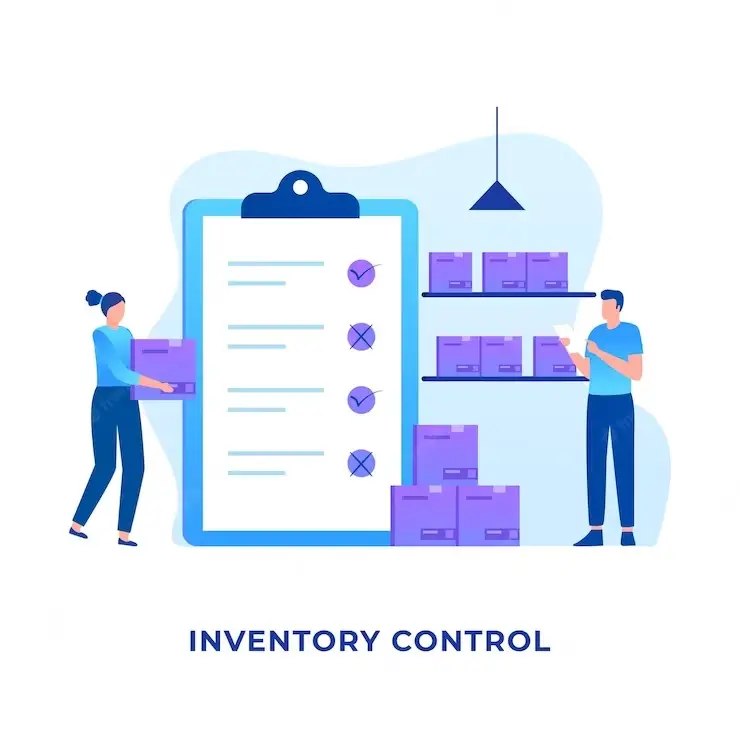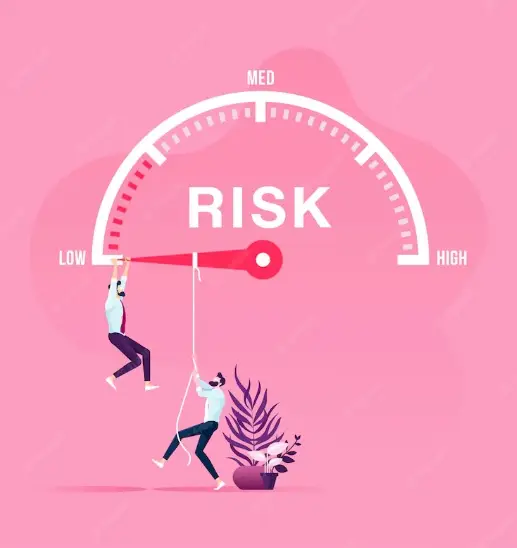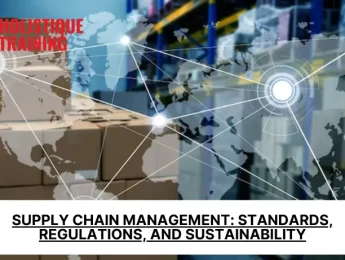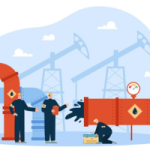What is a Value Chain?
How Does a Supply Chain Differ?
Where Do Value Chain and Supply Chain Overlap?
What Are the Primary Goals of Each Chain?
Which Chain Is More Customer-Centric?
What Are the Challenges Faced by Each Chain?
Which Chain Is More Profitable?
What Future Trends Can We Expect in Value and Supply Chains?
Introduction
In today's interconnected business world, understanding the intricacies of value and supply chains is crucial for organizational success. A value chain represents the series of activities undertaken by a company to deliver a valuable product or service to customers, while a supply chain focuses on the flow of materials and resources from suppliers to consumers. These chains are the backbone of modern commerce, encompassing procurement, production, logistics, and customer satisfaction processes. As businesses navigate through evolving market dynamics and technological advancements, it is essential to explore the challenges, goals, and future trends shaping both value and supply chains.
What is a Value Chain?
A value chain refers to the sequence of activities that a company performs in order to deliver a valuable product or service to its customers. This chain encompasses all the processes involved in creating, producing, marketing, selling, and delivering a product or service, from the initial stages of raw material acquisition to the final stages of customer satisfaction. The goal of a value chain is to maximize value for customers while minimizing costs and inefficiencies throughout the entire process.
How Does a Supply Chain Differ?
A supply chain differs from a value chain in that it focuses on the flow of materials, information, and resources from suppliers to manufacturers to distributors and finally to customers. While the value chain encompasses all the activities involved in creating value for customers, the supply chain specifically deals with the logistics and coordination of resources and activities to ensure smooth and efficient delivery of products/services. In essence, the supply chain is a subset of the broader value chain, primarily concerned with the physical movement and management of goods and services across the entire network of suppliers, producers, and consumers.
The key elements of a supply chain include:
- Suppliers: These are the entities or organizations that provide raw materials, components, or services necessary for the production of goods or services.
- Procurement: This involves the process of sourcing, purchasing, and acquiring the necessary materials, goods, or services from suppliers.
- Production: This encompasses the manufacturing or assembly process where raw materials are transformed into finished products or intermediate goods.
- Inventory Management: This involves the handling, storage, and control of inventory levels to ensure sufficient stock for production and meet customer demand without excessive overstocking.
- Logistics: This refers to the coordination and management of the physical flow of goods, including transportation, warehousing, distribution, and order fulfillment.
- Distribution: This involves the activities related to delivering finished products to customers, including transportation, order processing, and managing distribution channels.
- Information Systems: These are the technologies and systems used to track, monitor, and manage various aspects of the supply chain, including inventory levels, production schedules, and customer orders.
- Demand Planning: This involves forecasting customer demand, aligning production and inventory levels accordingly, and optimizing supply chain operations to meet customer needs efficiently.
- Supplier Relationships: Building and maintaining strong relationships with suppliers to ensure reliable and timely delivery of quality materials or services, as well as fostering collaboration and innovation within the supply chain network.
- Risk Management: Identifying, assessing, and mitigating potential risks and disruptions in the supply chain, such as supplier shortages, natural disasters, geopolitical issues, or economic fluctuations, to ensure continuity and resilience.
Where Do Value Chain and Supply Chain Overlap?
Value chain and supply chain overlap in several areas, including:
- Procurement and Sourcing: Both value chain and supply chain management involve procurement activities, such as sourcing raw materials, negotiating contracts with suppliers, and ensuring quality standards are met.
- Logistics and Transportation: Both chains require efficient logistics and transportation systems to move goods and services from suppliers to manufacturers and then to customers. This includes managing shipping, warehousing, distribution, and order fulfillment processes.
- Inventory Management: Effective inventory management is essential in both chains to ensure optimal stock levels, minimize holding costs, and meet customer demand without stock outs or overstocking.
- Quality Control: Both chains emphasize quality control measures to ensure that products or services meet customer expectations and comply with industry standards and regulations.
- Customer Satisfaction: Ultimately, both chains aim to deliver value to customers by meeting their needs, providing high-quality products or services, and ensuring a positive customer experience.
- Information Systems: Both chains rely on information systems and technology to track and manage various aspects, including inventory levels, production schedules, supplier performance, and customer orders.
- Supplier Relationships: Building and maintaining strong relationships with suppliers are critical in both chains to ensure reliable and timely delivery of materials or services, as well as to foster collaboration and innovation.
While value chain and supply chain management have distinct focuses and objectives, their integration and alignment are crucial for overall business success and delivering value to customers effectively.
What Are the Primary Goals of Each Chain?
The primary goals of each chain, the value chain, and the supply chain, can be summarized as follows:
- Value Chain Goals:
- Enhancing Value: The primary goal of the value chain is to enhance value for customers by optimizing processes, improving product quality, and delivering innovative solutions.
- Competitive Advantage: Creating a competitive advantage through differentiation, cost leadership, or focus strategies to stand out in the market and attract customers.
- Maximizing Profitability: Increasing profitability by minimizing costs, improving operational efficiency, and maximizing revenue through value-added products or services.
- Customer Satisfaction: Ensuring high levels of customer satisfaction by meeting or exceeding customer expectations, providing excellent service, and delivering value-aligned solutions.
- Continuous Improvement: Emphasizing continuous improvement in processes, products, and services to adapt to changing market dynamics, technological advancements, and customer preferences.
- Supply Chain Goals:
- Efficient Operations: Ensuring efficient operations across the supply chain, from sourcing materials to delivering products to customers, to minimize costs, reduce waste, and optimize resource utilization.
- Timely Delivery: Meeting customer demand and delivering products or services in a timely manner to enhance customer satisfaction, maintain market share, and avoid stock outs or delays.
- Cost Reduction: Identifying opportunities to reduce costs throughout the supply chain, including procurement, production, logistics, and inventory management, to improve profitability and competitiveness.
- Risk Management: Mitigating supply chain risks, such as disruptions in supply, quality issues, geopolitical factors, or natural disasters, to maintain continuity, resilience, and business sustainability.
- Collaboration and Integration: Promoting collaboration and integration among supply chain partners, including suppliers, manufacturers, distributors, and customers, to streamline processes, share information, and drive mutual value creation.
Table 1: Goals of the Value Chain and the Supply Chain
Goals | Value Chain | Supply Chain |
Enhancing Value | Optimize processes, improve product quality, innovate | Minimize costs, reduce waste, optimize resource utilization |
Competitive Advantage | Create differentiation, focus strategies for market appeal | Ensure timely delivery, maintain market share |
Maximizing Profitability | Increase revenue through value-added offerings | Identify cost-saving opportunities, improve efficiency |
Customer Satisfaction | Meet/exceed customer expectations, provide excellent service | Enhance customer satisfaction, streamline order fulfillment |
Continuous Improvement | Adapt to market changes, technological advancements | Improve supply chain resilience, mitigate risks |
While the value chain focuses on creating value for customers and achieving competitive advantage, the supply chain is more concerned with operational efficiency, cost management, risk mitigation, and collaboration across the entire network of stakeholders. Both chains work together synergistically to achieve overall business success and deliver value to customers effectively
Which Chain Is More Customer-Centric?
The value chain is generally considered more customer-centric compared to the supply chain. Here's why:
- Focus on Customer Value: The primary goal of the value chain is to create and deliver value to customers. It emphasizes understanding customer needs, preferences, and expectations, and aligning all activities from product design to delivery to meet those requirements effectively.
- Product Innovation: The value chain places a strong emphasis on product innovation and differentiation to address customer pain points, offer unique features, and provide solutions that resonate with customers, thereby enhancing their overall experience.
- Service Quality: Customer satisfaction is a core focus of the value chain, ensuring that products or services are of high quality, reliable, and consistent. This includes aspects such as customer service, after-sales support, and warranty services.
- Customer Feedback Integration: Value chain management often involves gathering and integrating customer feedback into product development and improvement processes. This feedback loop helps in continuously refining products or services based on customer insights and preferences.
- Brand Loyalty: A customer-centric value chain fosters strong brand loyalty by building positive relationships with customers, meeting their needs consistently, and exceeding their expectations, leading to repeat purchases and advocacy.
While the supply chain plays a crucial role in supporting the value chain's customer-centric objectives by ensuring efficient and timely delivery of products, managing inventory levels, and optimizing logistics, it is the value chain that directly interfaces with customers and drives initiatives focused on enhancing their experience and satisfaction.
What Are the Challenges Faced by Each Chain?
Both the value chain and the supply chain face various challenges that can impact their effectiveness and efficiency. Here are some challenges faced by each chain:
Challenges Faced by the Value Chain:
- Market Dynamics: Rapid changes in market trends, customer preferences, and competitive landscapes can pose challenges in anticipating and adapting to shifting market demands effectively.
- Product Innovation: Developing innovative products or services that meet customer needs while staying ahead of competitors requires substantial investment in research, development, and experimentation, which can be challenging to sustain.
- Cost Management: Balancing the costs of production, marketing, distribution, and customer service while maintaining competitive pricing and profitability can be challenging, especially in cost-sensitive markets or during economic downturns.
- Supply Chain Integration: Ensuring seamless integration and collaboration across the entire supply chain, including suppliers, manufacturers, distributors, and retailers, to deliver value-added solutions to customers can be complex and require effective communication and coordination.
- Technology Adoption: Keeping pace with technological advancements, digital transformation, and industry disruptions to leverage automation, data analytics, and digital tools for improved efficiency, innovation, and customer experiences.
Challenges Faced by the Supply Chain:
- Supply Chain Disruptions: Disruptions such as natural disasters, geopolitical issues, supplier failures, or global crises (e.g., pandemics) can disrupt supply chains, leading to delays, shortages, increased costs, and customer dissatisfaction.
- Inventory Management: Balancing inventory levels to meet fluctuating demand, minimize stock outs, avoid overstocking, and optimize working capital utilization can be challenging, especially in industries with seasonal or unpredictable demand patterns.
- Logistics and Transportation: Managing complex logistics networks, optimizing transportation routes, addressing last-mile delivery challenges, and ensuring on-time deliveries while minimizing costs and environmental impacts.
- Quality Control: Maintaining consistent product quality, complying with regulatory standards, and addressing quality issues or recalls promptly to protect brand reputation, customer trust, and market share.
- Data Security and Privacy: Safeguarding sensitive supply chain data, protecting against cybersecurity threats, ensuring data integrity, and complying with data privacy regulations to maintain trust and confidentiality across the supply chain ecosystem.
Addressing these challenges requires strategic planning, proactive risk management, continuous improvement initiatives, collaboration with stakeholders, and leveraging technology and innovation to enhance resilience, efficiency, and competitiveness in both the value chain and the supply chain.
Which Chain Is More Profitable?
Determining which chain, the value chain or the supply chain, is more profitable depends on various factors such as the industry, market dynamics, business model, and competitive strategy. Both chains play critical roles in generating revenue and optimizing costs within an organization, contributing to overall profitability in different ways:
- Value Chain Profitability:
- Differentiation Strategy: Organizations that focus on value creation through product differentiation, innovation, and premium pricing within the value chain may achieve higher profit margins. Customers are often willing to pay a premium for unique features, quality, and brand value.
- Customer Retention and Loyalty: A customer-centric value chain that prioritizes customer satisfaction, loyalty programs, and repeat purchases can lead to long-term revenue streams, reduced marketing costs, and higher customer lifetime value (CLV), contributing to profitability.
- Brand Equity: Building a strong brand image, reputation, and customer trust through the value chain can enhance market competitiveness, pricing power, and profitability by attracting and retaining customers.
- Supply Chain Profitability:
- Cost Leadership Strategy: Organizations that focus on cost leadership within the supply chain by optimizing procurement, production, logistics, and inventory management can achieve higher cost efficiencies, lower production costs, and competitive pricing, leading to increased profitability.
- Operational Excellence: Efficient supply chain operations, streamlined processes, reduced waste, improved resource utilization, and economies of scale can contribute to higher profit margins and profitability.
- Supplier Relationships: Collaborative relationships with suppliers, strategic sourcing, cost negotiations, and supply chain optimization initiatives can lead to cost savings, better supply chain performance, and improved profitability.
Table 2: A comparison of the profitability factors between the value chain and the supply chain
Factors | Value Chain | Supply Chain |
Profit Drivers | Differentiation, innovation, premium pricing | Cost leadership, operational efficiency, supplier relationships |
Revenue Generation | Unique features, brand equity, customer loyalty | Cost efficiencies, economies of scale, supplier collaborations |
Cost Management | Marketing investments, quality control, brand reputation | Procurement optimization, production efficiency, logistics |
Market Competitiveness | Customer value perception, market share growth | Competitive pricing, supply chain resilience, agility |
Strategic Alignment | Value creation focus, brand building strategies | Cost optimization, risk mitigation, supply chain integration |
Ultimately, achieving profitability requires a balanced approach that integrates both the value chain and the supply chain effectively. Organizations often leverage synergies between these chains, such as aligning value creation with cost efficiency, optimizing supply chain processes to support value-added activities, and continuously improving operational performance to drive profitability across the entire business ecosystem.
What Future Trends Can We Expect in Value and Supply Chains?
ere are some future trends expected in both value and supply chains:
Value Chain Trends:
- Digital Transformation: Increasing adoption of digital technologies such as AI, IoT, blockchain, and big data analytics to enhance product innovation, personalize customer experiences, optimize operations, and enable real-time decision-making.
- Sustainability and ESG Initiatives: Greater focus on sustainability, environmental, social, and governance (ESG) practices throughout the value chain, including sustainable sourcing, green manufacturing, carbon footprint reduction, and circular economy principles.
- Collaborative Ecosystems: Emphasis on building collaborative ecosystems and partnerships with suppliers, distributors, startups, and industry stakeholders to drive innovation, co-create value, share resources, and expand market reach.
- Customer-Centricity: Deeper understanding of customer needs, preferences, and behaviors through data analytics, AI-driven insights, and customer feedback mechanisms to deliver personalized products, services, and experiences.
- Agile and Flexible Operations: Agile methodologies, flexible production processes, modular design concepts, and rapid prototyping to adapt to changing market demands, shorten time-to-market, and improve responsiveness.
Supply Chain Trends:
- Resilience and Risk Management: Enhanced focus on building resilient supply chains, supply chain visibility, risk mitigation strategies, scenario planning, and contingency plans to address disruptions, uncertainties, and global challenges.
- End-to-End Visibility: Greater adoption of supply chain visibility tools, IoT devices, RFID technology, and blockchain platforms to track and monitor inventory, shipments, logistics, and supplier performance in real time across the entire supply chain network.
- Supply Chain Digital Twins: Implementation of digital twin technologies to create virtual replicas of physical supply chain processes, assets, and workflows for simulation, optimization, predictive analytics, and performance monitoring.
- Supply Chain Sustainability: Integration of sustainable practices, ethical sourcing, responsible procurement, green logistics, and carbon-neutral initiatives to reduce environmental impact, achieve sustainability goals, and meet regulatory requirements.
- Supply Chain Reshoring and Localization: Increased focus on reshoring, nearshoring, and localization strategies to reduce supply chain risks, enhance supply chain agility, improve lead times, and support local economies.
These trends reflect the evolving landscape of value and supply chains, driven by technological advancements, changing consumer expectations, sustainability imperatives, geopolitical shifts, and the need for resilience and agility in a rapidly changing global business environment. Organizations that embrace these trends and proactively adapt their strategies and operations are likely to gain a competitive advantage and succeed in the future marketplace.
Conclusion
In conclusion, value and supply chains are integral components of modern business operations, each with its distinct challenges, goals, and strategies. The value chain emphasizes creating value for customers through innovation, quality, and customer-centricity, while the supply chain focuses on operational efficiency, risk management, and collaboration across the network. Looking ahead, future trends such as digital transformation, sustainability initiatives, collaborative ecosystems, and supply chain resilience will significantly impact how organizations operate and compete in the global marketplace. By embracing these trends and aligning strategies with evolving market demands, businesses can navigate challenges, drive innovation, and achieve sustainable growth in their value and supply chain management practices.
Frequently Asked Questions(FAQ)
What is the primary goal of the value chain?
The primary goal is to create and deliver value to customers through innovative products and exceptional experiences.
How does supply chain management contribute to business success?
By optimizing operations, reducing costs, managing risks, and ensuring timely delivery, supply chain management enhances overall business performance.
How can technology improve both value and supply chains?
Technology aids in automation, data analytics, real-time tracking, and collaboration, leading to enhanced efficiency, innovation, and customer satisfaction.
What Role Does Technology Play in Each Chain?
Technology plays a crucial role in both the value chain and the supply chain by enhancing efficiency, innovation, and customer experiences. In the value chain, technology enables product innovation and process optimization, while in the supply chain, it improves logistics, inventory management, and collaboration among stakeholders.
How Do Value Chain and Supply Chain Management Differ?
Value chain management focuses on creating value for customers through activities like product innovation and customer-centric strategies. On the other hand, supply chain management emphasizes efficient resource allocation, risk mitigation, and timely delivery of goods or services.























